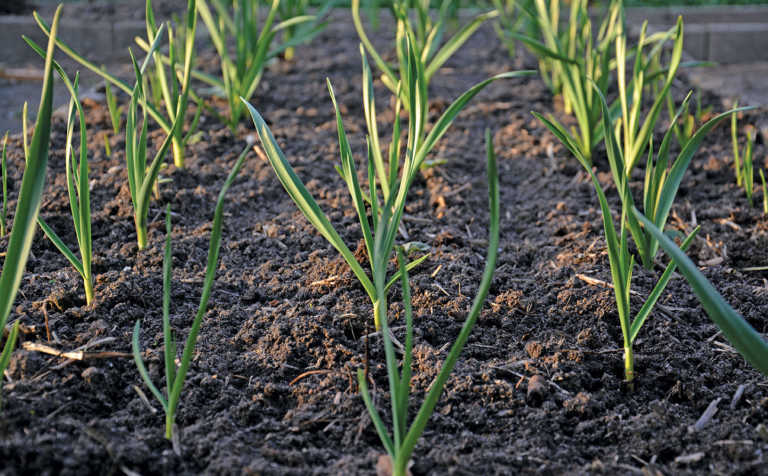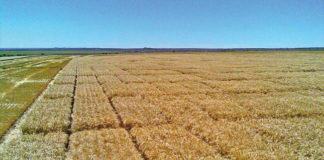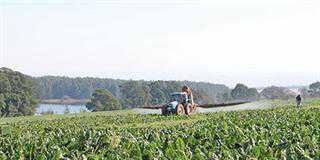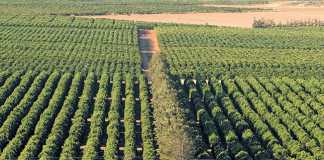
Photo: Getty Images
Jacques Terblanche, who co-founded Graceland Garlic Seed with his father, Dereyck, produces seed for growers on 3ha in Springs, Gauteng.
According to Terblanche, many factors have to be considered when planting garlic.
Although the crop can be grown successfully in a wide range of soil types and in almost any climate, it fares best in well-drained soils with a pH of between 6 and 7,5.
“Sandy loam is ideal. Soils with high organic matter content are preferred, due to their increased moisture- and nutrient-holding capacity. These soils are also less prone to crusting and compaction,” he says.
Very heavy soil types hinder bulb expansion, particularly if allowed to dry out, resulting in irregularly shaped bulbs. Intensive soil management practices are required on light sandy soils with low moisture-holding capacity.
“Soils should be prepared in advance to eliminate perennial weeds,” says Terblanche. He recommends ploughing to a depth of 15cm to 20cm, then harrowing, leaving the soil in good tilth. The surface should be levelled out and worked well, leaving a smooth surface to enable effective irrigation and drainage.
The right cultivar
Egyptian white, Egyptian pink and giant garlic have been planted for many generations in South Africa and these cultivars have adapted well to local climates.
“Garlic prefers the shorter and cooler days of winter and is frost-resistant,” Terblanche explains.
“For a better chance of a good crop, it’s important to stick to the correct planting time, from February to May, but this depends on where in South Africa you farm.”
He adds that good-quality seed forms the foundation of a good harvest.
“It’s impossible to harvest a great crop from poor seed. A common mistake that people make is to buy fresh garlic off the shelf and plant cloves taken from those bulbs as seeds.
These are often sterile and won’t produce sizable bulbs. It’s better to buy seed from a reputable supplier.”
When planted, each clove forms a clone of the mother plant.
“Cloves should be planted at a depth of between 3cm and 5cm, and 8cm to 12cm apart, with the point of the seed upwards. Density is usually 250 000 seeds/ha.
“Quality, disease-free seed is expensive, but potential farmers shouldn’t be put off by this. Rather start off small and build up your own seedbank in your first year. You can always buy more seed to add to your existing seedbank in your second year.”
Egyptian garlic varieties can produce a yield of up to 6t/ ha, with the giant variety producing up to 12t/ha.
Pest and diseases
Common pests and diseases to look out for include thrips, cutworm and white rot, which is caused by the fungus Sclerotium cepivorum Berk.
“Excellent products are available to combat these by Garlicmeans of biological or chemical control,” says Terblanche. “Also, rotate and don’t plant in the same soil consecutively. Keep your lands weed-free by using mechanical methods as well as herbicides. Identify pests or diseases as early as possible; it’s easier to control them then.”
Garlic prefers moist soil, but the plants should not be soaked in water. The crop should receive approximately 25mm of water a week, depending on the soil type.
Fertilising
During its initial growth phase, as the plant emerges and spreads its leaves, the crop might require generous applications of nitrogen. Phosphorus should also be applied for optimal root development, and potassium added for leaf growth and healthy bulb formation.
“Before applying fertiliser, verify phosphorus and potassium levels with a soil test. Broadcast any required phosphorus or potassium, followed by shallow incorporation into the soil before planting. The amount of nitrogen required will vary with soil type, the previous crop grown, the amount of organic matter present and the climatic conditions during the growing season.”
Harvest and storage
Garlic is ready to be harvested when 30% of the plants on a land have turned brown and started dying down. Harvesting can be carried out manually or mechanically but should be done carefully to prevent damaging the bulbs.
After the plants have been pulled from the soil, they are laid out in bunches to dry for up to three days and then hung in a cool, well-ventilated place. Once the lobes have dried out, the leaves can be cut off and the garlic is ready to be marketed. A distinct advantage of growing garlic is its long shelf life; it can be stored for months at room temperature.
Reducing imports
According to the South African Garlic Growers’ Association, garlic imports are the greatest challenge to achieving a sustainable local garlic industry. Dumping of garlic from China, in particular, is a severe problem.
“In 2015, the Department of Trade and Industry allocated an anti-dumping levy of R19,25/kg on all fresh garlic from China,” writes Corrie Bezuidenhout, chairperson of the association, in a recent report.
“We were successful with the application because evidence showed that China was dumping cheap garlic on the South African market at prices far lower than the world parity and local production costs at that stage.”
This resulted in a major drop in import volumes from China, which led to a shortage of garlic in South Africa. Some importers grabbed this opportunity to shop for garlic on the world market, and garlic started to pour into South Africa from other countries. About 4 500t of the crop is sold in South Africa a year. In 2017, about 58%, or 2 625t of this, was imported, including 1 905t from Spain.
“We need to win the trust of our bigger buyers of garlic, which are the supermarkets. The long shelf life of garlic, and the availability of good-quality garlic on the world market, makes it easier for these groups to order garlic from a reputable supplier in a foreign country than to run around locally in search of garlic,” Bezuidenhout says.
A first step for the local industry would be to establish a central marketing channel for locally produced garlic.
Email Jacques Terblanche at [email protected], or visit gracelandgarlicseed.com.













